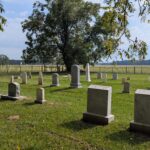

I am often asked, “Of the many places you’ve gone fishing, which is your favorite?”
You might think that query would stump me. After all, I’ve been fortunate enough to fish throughout much of the Western Hemisphere, from Canada to Brazil.
I’ve fished for salmon and halibut in the shadow of the beautiful snow-capped peaks in Alaska’s Chugash Mountain range. I’ve cast for catfish and peacock bass in the verdant jungles of Brazil, and targeted saber-toothed payaras in Venezuela’s gorgeous Rio Paragua.
I’ve fished in the Rockies and the Appalachians, the Pacific and the Atlantic, the Gulf of Mexico and the Sea of Cortez. But when I tell folks about my favorite place, I tell them it’s right here in my home state of Arkansas near the tiny town of Ethel.
I don’t mind sharing it with you, too. It’s a big place, covering a total of more than 160,000 acres in the state’s eastern Delta, so there’s plenty of room for all of us to visit.
You should go, too—not just because of the great fishing, but because in autumn this lovely piece of river-bottom-real estate is, in my mind, the most beautiful spot in the world.
Its name is Dale Bumpers White River National Wildlife Refuge (NWR).
Within the refuge are more than 300 natural lakes—more than you are likely to fish in a lifetime—plus numerous bayous, sloughs and, of course, White River itself, which flows 90 miles through this often-overlooked paradise.
Bass live in the emerald waters of the oxbows, and catfish and bluegills and crappie—lots of them. Because of these lakes’ remoteness, however, and because it often is difficult to launch a boat, visiting anglers are few.
One might fish a lake for days without seeing another soul. And while you are there alone, or with a special companion, if you drop in a cricket or minnow, or cast a crankbait or spinner, you will catch fish after fish after fish, and your angling itch will be soothed.
Abundant fish provide endless opportunities for fun. But many who visit the refuge come primarily to “get away from it all” and enjoy this haven’s plentiful wildlife and natural beauty. If fish are caught, that’s just icing on the cake.
On a good day, you could see many types of birds, plus deer, otters, foxes and even a resident population of black bears. Breath deep and you will smell the evergreen fragrance of cypress needles and the redolence of rich, bottomland earth and fertile water. Listen and you will hear the haunting calls of barred owls—Who cooks for you? Who cooks for you? —and the rippling water as the river rolls past.
Relax, and you will feel your cares melt away. Senses stir every minute you are there.
Refuge History
We are fortunate, indeed, that a group of foresighted individuals in the 1930s pushed the federal government to protect the land that is now White River NWR. President Franklin D. Roosevelt established the refuge by executive order in 1935, and the acquisition of 110,000 acres was completed soon after, primarily for the purpose of waterfowl conservation. The lands were acquired using funds raised by sales of federal duck stamps to hunters.
Prior to 1992, the refuge’s total acreage was 112,771 acres. But that year, an innovative land exchange that traded private Idaho timberland for wetlands in Arkansas added approximately 40,000 acres to the refuge’s north end.
Twelve years later, the refuge was officially renamed Dale Bumpers White River National Wildlife Refuge in honor of the former Arkansas governor and U.S. senator who facilitated the land swap.
Today, the refuge stretches along the White River from Clarendon to the river’s confluence with the Mississippi, covering 160,756 acres in Arkansas, Desha, Monroe and Phillips counties. It contains one of the largest remaining bottomland hardwood forests in the Mississippi River Valley.
Wildlife Haven

The importance of the refuge to wildlife, particularly migratory waterfowl and songbirds, cannot be understated. The bottomlands it encompasses have been designated as Wetlands of International Importance. The American Bird Conservancy named White River NWR a Globally Important Bird Area, and Audubon Arkansas has recognized it as an Arkansas Important Birding Area. White River NWR also is also part of The Nature Conservancy’s Big Woods Project to conserve this huge floodplain ecosystem.
A good place to begin your visit is the visitor center on Highway 1 in St. Charles. This 10,000-square-foot facility houses a bookstore, environmental education classroom and interpretive exhibits that focus on bottomland hardwood forests, prehistoric animals, the U.S. Civil War and Native American history. Refuge personnel are also developing several miles of interpretive trails that will loop around the visitor center.
While at the visitor center, pick up a refuge brochure the shows area roads. Then, if it hasn’t rained hard and made the roads impassable, take a drive through the scenic river bottoms and enjoy views of the beautiful oxbows, the broad White River and the massive cypress trees that lend grandeur to the landscape.
Be sure you have a camera so you can snap some photos, and binoculars you can use to better see the deer, raccoons, birds, bears and other creatures you might encounter along the way.
A great place for a walk is the 1.2-mile trail to Arkansas’ champion cypress tree. Visitor center personnel can direct you there where you’ll see a tree so massive it boggles the mind. With a height of 120 feet and a girth of more than 40 feet, this 2,000-year-old colossus is the largest and oldest living thing in the state.
Wildlife watching, fishing, hiking, hunting and more: White River NWR offers so much to do for the half million people who visit each year. Some might think such a big river-bottom swamp like this would be a poor choice for an autumn visit. For many, though, beauty, solitude, abundant wildlife and good fishing combine to make this Natural State gem a special haven where escape is assured and good memories are made.
Note: An Annual Public Use Permit is required to hunt, fish, launch boats and utilize campgrounds on Dale Bumpers White River NWR. The permit cost is $20.00 for those 16 years of age and over and is free to those 15 years of age and younger.
Fishing is permitted year-round in on most waters in the northern portion of the refuge, but those south of Arkansas Highway 1 are, for the most part, open to sport fishing only from March 1 through November 30.
For additional information, visit the refuge website.

Keith “Catfish” Sutton of Alexander, Arkansas, is one of the country’s best-known outdoor
journalists. His stories and photographs about fishing, hunting, wildlife and conservation have
been read by millions in hundreds of books, magazines, newspapers and websites. He and his
wife Theresa own C&C Outdoor Productions Inc., an Arkansas-based writing, photography,
lecturing and editorial service.




Get DownHome Arkansas blog posts, news, and more directly by email. Give us your name and email if you’d like to subscribe.